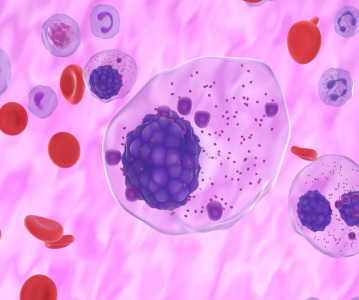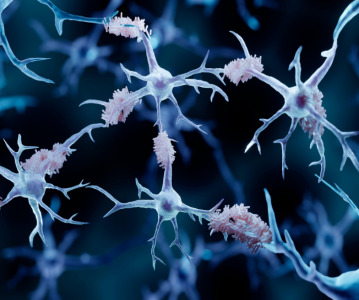Positive Phase I/II interim data of Bimatoprost sustained-release implant for IOP therapy in glaucoma

Bimatoprost SR is a biodegradable, intracameral implant providing slow release of bimatoprost and is a differentiated approach to treat glaucoma beyond conventional daily eye drop treatments because it is a non-daily treatment administered by a physician.
Allergan has announced the 6-month interim results from a 24-month Phase I/II clinical trial of 75 patients, which showed that a single dose of Bimatoprost Sustained-Release (SR) lowered intraocular pressure (IOP) in 92% (n= 69) of glaucoma patients at 4 months and 71% (n=53) at 6 months while demonstrating a favorable efficacy and safety profile. Bimatoprost SR is a biodegradable, intracameral implant providing slow release of bimatoprost and is a differentiated approach to treat glaucoma beyond conventional daily eye drop treatments because it is a non-daily treatment administered by a physician.
"We are encouraged by these interim results, and Phase III trials are currently underway," said David Nicholson, Executive Vice President and President, Global Brands Research & Development, Allergan.
"Bimatoprost SR has the potential to be a novel approach to treat glaucoma beyond conventional eye drop treatments and illustrates our commitment to bringing innovative solutions for physicians to help them meet the needs of their patients."
In the Phase I/II dose-ranging, paired-eye controlled clinical trial, a total of 75 patients received the implant via an intracameral injection in one eye, and daily topical bimatoprost 0.03% in the other eye. The dose strengths of Bimatoprost SR were 6, 10, 15, or 20 micrograms. All dose strengths of Bimatoprost SR were comparable with topical bimatoprost 0.03% in overall IOP reduction through week 16. The overall mean IOP reduction from baseline at 4 months in study eyes that received a single Bimatoprost SR implant ranged from 7.2 to 9.5 mm Hg while pooled fellow eyes receiving once-daily treatment with topical bimatoprost 0.03% had a reduction of 8.4 mm Hg. At month 6, 71% (n=53) of study eyes still had not received topical IOP-lowering rescue or a second injection of Bimatoprost SR.
"Patients having challenges in taking their daily eye drops is one of the greatest challenges we face as eye care physicians," said Richard Lewis, clinical trial investigator, former director of glaucoma at the University of California, Davis, and ophthalmologist at Sacramento Eye Consultants. "The results seen to date indicate that Bimatoprost SR may offer patients a non-daily treatment option that is administered by a physician."
Related News
-
News BioNTech to begin mRNA vaccine manufacturing in Rwanda by 2025
German biotechnology company BioNTech has stated their intentions to begin production at their mRNA vaccine factory in Rwanda by 2025, which will mark the first foreign mRNA vaccine manufacturing site on the continent of Africa. -
News Identifying Alzheimer’s Disease biomarker proteins with whole blood tests
A University of Manchester spin-out pharmaceutical company, PharmaKure, has reported successful study results for the quantification of Alzheimer’s Disease biomarker proteins with a whole blood test. -
News Bill & Melinda Gates Foundation to boost mRNA vaccine initiatives in Africa with USD $40m
To address vaccine inequality and accessibility issues, the Bill & Melinda Gates Foundation aims to deliver USD $40m to various biotech companies and vaccine manufacturers in support of mRNA vaccine development. -
News CPHI Podcast Series: Exploring neurological frontiers in Alzheimer's and beyond
The next episode of the CPHI Podcast Series delves into the science and background behind some recent developments in the field of Alzheimer's disease and neurological disorders. -
News Is patient centricity the future of pharmaceutical manufacturing?
In this interview with Sandra Sánchez y Oldenhage, President of PharmAdvice, she speaks to the importance of considering patients in the manufacturing stages of the pharmaceutical supply chain, and how it can redefine healthcare. -
News CPHI Podcast Series: How to leverage AI for Drug Discovery
Artificial intelligence is the topic of debate in the latest episode from the CPHI Podcast Series, where Digital Editor Lucy Chard speaks with Bill Whitford of DPS Group about the integration of AI in healthcare. -
News Pfizer forges ahead with blood cancer therapy after approval from FDA
Pfizer gains accelerated approval from the US FDA for their new bispecific antibody therapy for multiple myeloma, set to address an unmet need for patients. -
News Alzheimer's drug donanemab deemed effective in landmark clinical trial
Results from the TRAILBLAZER-ALZ 2 Randomised Clinical Trial into the use of donanemab to treat early symptoms of Alzheimer’s disease have been analysed.
Position your company at the heart of the global Pharma industry with a CPHI Online membership
-
Your products and solutions visible to thousands of visitors within the largest Pharma marketplace
-
Generate high-quality, engaged leads for your business, all year round
-
Promote your business as the industry’s thought-leader by hosting your reports, brochures and videos within your profile
-
Your company’s profile boosted at all participating CPHI events
-
An easy-to-use platform with a detailed dashboard showing your leads and performance







